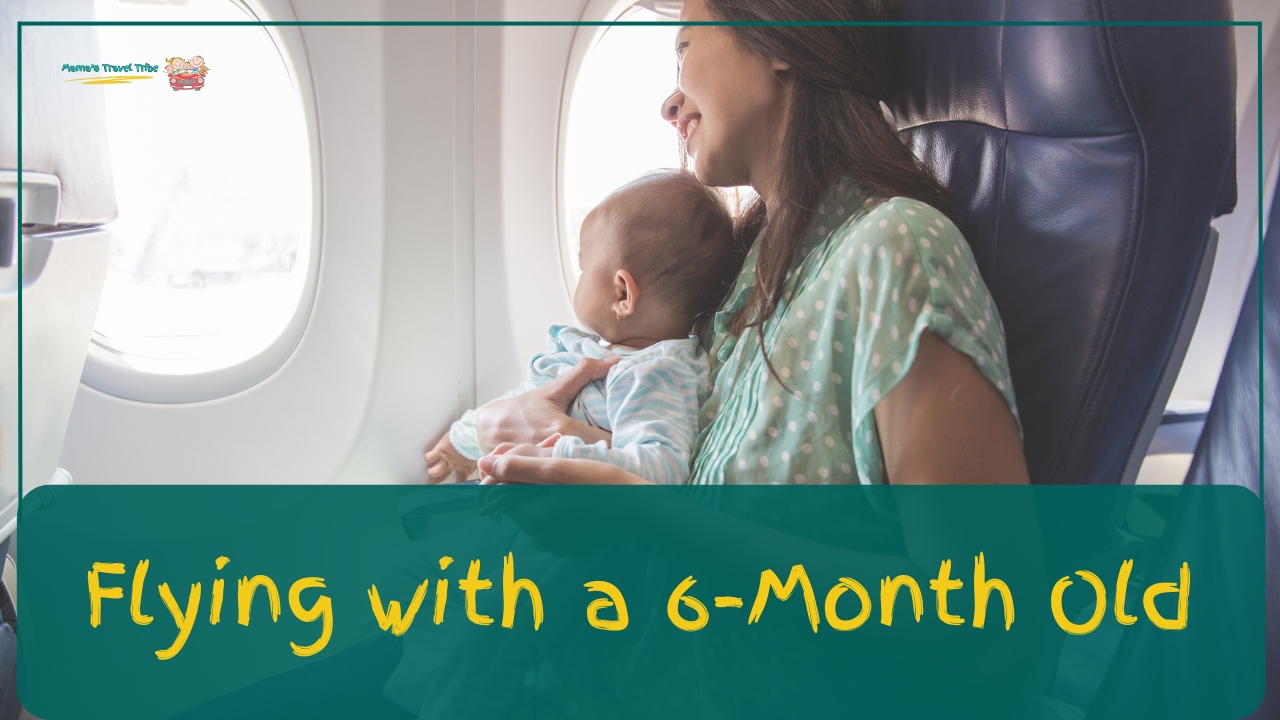Do you need tips for flying with a 6-month-old? They are a lifesaver for parents planning their first trip. Remember that it’s all about planning ahead and staying calm. Stick around for expert advice that will ease your travel worries!
What Are the Tips for Flying With a 6 Month Old?
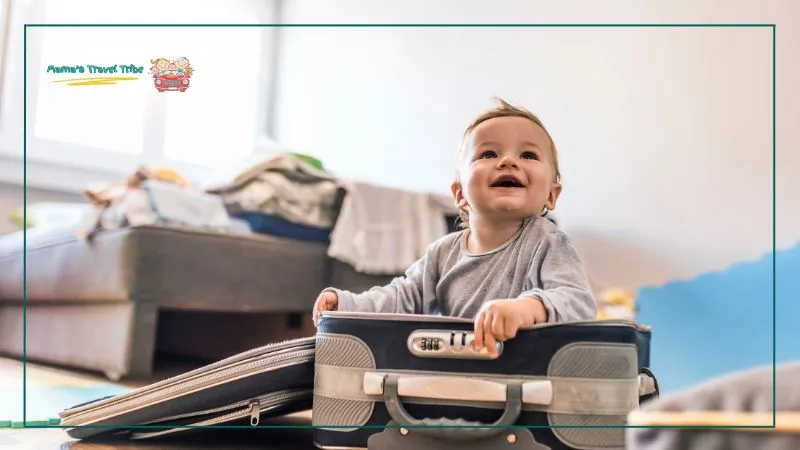
The best tip for flying with a six month old is to pack plenty of diapers, wipes, and a change of clothes. Use a baby carrier for hands-free navigation. Furthermore, feed your baby during takeoff and landing to ease ear pressure.
There are more critical tips, and I’m sharing all of them now.
Stage 1: Pre-flight Preparation Tips
Flying with a 6-month-old can seem daunting, which is why you should prepare well. Remember that with a little preparation, it can be a smooth experience. Here are some tips to help you get ready for the journey:
Book Direct Flights: If you can, always go for direct flights. Layovers can be stressful and make your travel time much longer. A direct flight means less hassle and more comfort for both you and your baby.
Fly During Nap Times: Try to schedule your flight during your baby’s usual sleep times. When your baby’s nap schedule aligns with the flight, there’s a good chance they will sleep through most of the journey, making it easier for you to relax.
Choose Your Seat Wisely: Picking the right seat can make a big difference. A window seat offers more privacy, which is great if you need to breastfeed or soothe your baby. Alternatively, seats near the front of the plane can be handy for quick access to the restroom and easier boarding and disembarking.
Check Pre-boarding Options: Many airlines offer pre-boarding for families with young children. Take advantage of this to get settled in without the rush and chaos of general boarding. Check with your airline ahead of time to see what they offer.
Bring Enough Food and Snacks: If your baby is bottle-fed, I suggest bringing enough formula or breast milk. For older babies, pack some healthy snacks. It’s always better to have more than you think you’ll need, just in case of delays.
Dress Comfortably: Dress your baby in comfortable, easy-to-change clothes. Layers are a good idea because the temperature on planes can vary. Also, consider wearing a comfortable outfit yourself since you’ll be holding and caring for your baby throughout the flight.
Plan for Security Checks: Airport security can be tricky with a baby. Be prepared to take your baby out of their stroller or carrier and send items like diaper bags and bottles through the X-ray machine. Allow extra time for this process so you’re not rushed.
Stay Calm and Positive: Your baby can sense your emotions. If you’re calm and positive, your baby is more likely to stay calm, too. Think of the flight as an adventure rather than a chore.
Ask for Help: Don’t hesitate to ask flight attendants for help. They can assist with warming bottles, getting extra supplies, or even just offering a kind word when you need it.
Prepare for Ears Popping: Babies can experience discomfort due to changes in cabin pressure during takeoff and landing. To help with this, try breastfeeding or bottle-feeding your baby during these times. Sucking and swallowing can help relieve the pressure in their ears.
Stage 2: Packing Tips
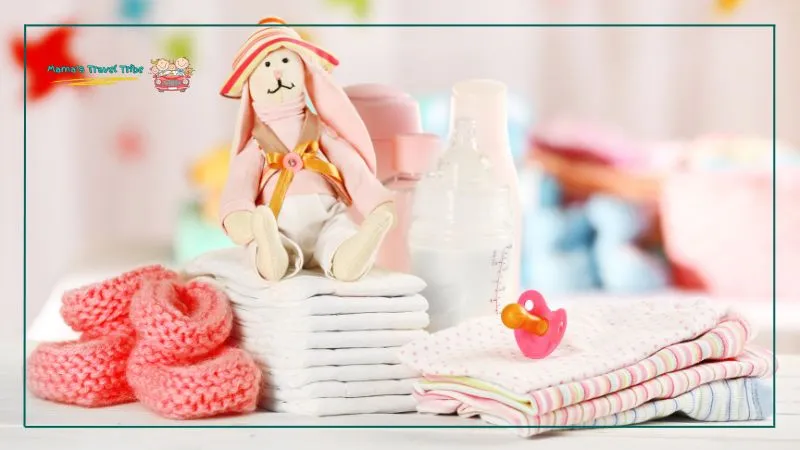
When it comes to packing for a flight with a 6-month-old, preparation is key. Let’s go over some essential items to pack in your carry-on to ensure a smooth journey.
Diapers and Wipes: First and foremost, pack plenty of diapers and wipes. You never know when you might face a delay or an unexpected mess, so having extra on hand is always a good idea. I usually pack one diaper for every hour of travel, plus a few extras, just in case.
Change of Clothes: Bring at least two changes of clothes for your baby. Spills, spit-ups, and diaper leaks can happen, and it’s always better to be prepared. Also, pack an extra shirt for yourself. Trust me, you’ll thank me if you end up with baby food or formula on your clothes.
Blanket: A soft blanket can create a cozy and familiar environment for your baby.
Favorite Toy or Book: Having a small, familiar toy or book can be a lifesaver. It can help keep your baby entertained and provide comfort. I always bring my baby’s favorite stuffed animal and a couple of board books.
Pacifier or Bottle: Babies can experience ear pressure during takeoff and landing. To help with this, make sure to have a pacifier or bottle ready. Sucking helps to equalize the pressure in their ears and can make the ascent and descent much more comfortable.
Comfort Items: Bring any items that comfort your baby. For some, it might be a special blanket or a lovey. For others, it might be a specific pacifier or a favorite toy. Having these items can make your baby feel more secure in a new environment.
Baby Carrier: A baby carrier can be incredibly useful. It keeps your hands free and can help soothe your baby by keeping them close. Plus, it’s handy for walking through the airport and navigating security.
First Aid Kit: You should also take a small first aid kit with essentials like baby-safe pain reliever, teething gel, and band-aids. You never know when you might need these, and it’s better to have them on hand.
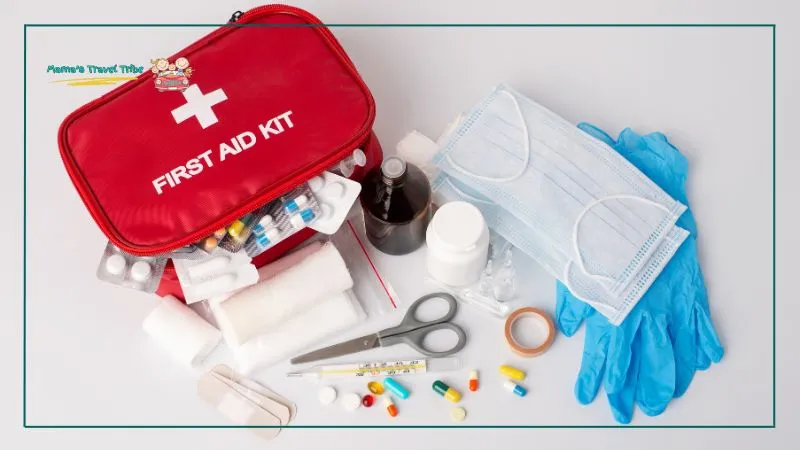
Hand Sanitizer and Sanitizing Wipes: Airplanes can be germy places, so bring hand sanitizer and sanitizing wipes. You can use the wipes to clean tray tables, armrests, and any other surfaces your baby might touch.
Extra Snacks for Yourself: Don’t forget about yourself! Pack some snacks and a water bottle for yourself. Keeping yourself hydrated and fed is important, especially when you’re taking care of a little one.
Stage 3: Tips to Navigate the Airport
Navigating the airport with a 6-month-old can be a breeze with a few handy tips. Let’s go through how you can make the whole process smoother and less stressful.
Family Security Lines: Check if your airport has family security lines. These lines are usually shorter, and the staff are more patient with families. They understand that you might need a little extra time to get through security, and they’re usually very helpful.
Use a Baby Carrier: I always recommend using a baby carrier. It keeps your hands free to handle luggage and documents, and it helps keep your baby close and calm. Plus, it makes moving through the airport much easier.
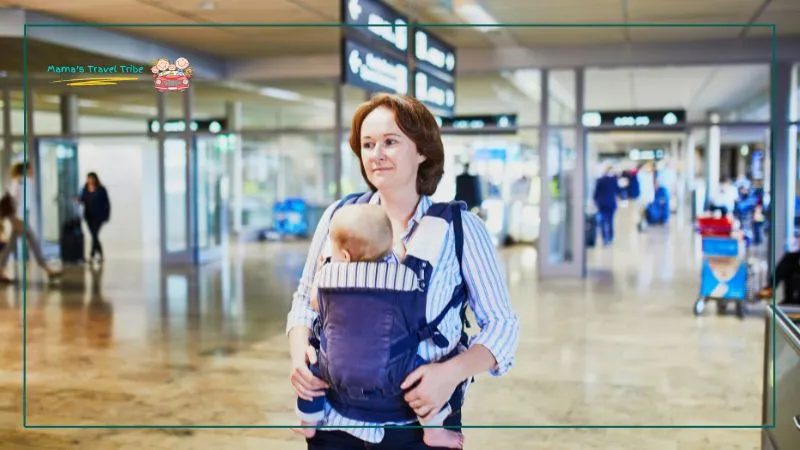
Gate-Check Your Stroller or Car Seat: Find out if you can gate-check your stroller or car seat. This way, you can use them right up until you board the plane. It’s super convenient, and you don’t have to worry about lugging them through the airport or waiting for them at baggage claim.
Have Necessary Documents Ready: Make sure you have all of your baby’s necessary documents ready. For international travel, this means their passport. Some airlines ask for a birth certificate to verify your baby’s age. It’s always a good idea to keep these documents in an easily accessible place.
Know the Airline’s Policies: Every airline has different policies regarding infants. Familiarize yourself with these before you travel. This includes rules about carry-on items for babies, boarding procedures, and any extra fees that might apply.
Arrive Early: Give yourself plenty of time. Arriving early means you won’t feel rushed, and you’ll have time to handle any unexpected issues that come up. It also gives you a chance to find a quiet spot for a feeding or a quick diaper change before boarding.
Use Priority Boarding: Many airlines offer priority boarding for families with young children. Take advantage of this. It allows you to get settled in your seats before the plane gets crowded, making the whole boarding process much less stressful.
Keep Your Baby Entertained: While waiting at the gate or going through security, keep your baby entertained with a favorite toy or book. This can help prevent fussiness and keep them distracted from their busy surroundings.
Stage 4: On the Flight
Flying with a 6-month-old can be challenging, but with the right strategies, you can make it a smoother experience. Here are some tips to help you and your baby during the flight.
Walk Around Periodically: If you’re on a long flight, take breaks to walk around with your baby. This can help both of you avoid restlessness. Just a few minutes of walking up and down the aisle can make a big difference.
Use the Airplane Bassinet: If your flight offers an airplane bassinet, take advantage of it. These are especially useful on long flights, giving your baby a comfortable place to sleep. Make sure to reserve one in advance, as they are often limited.
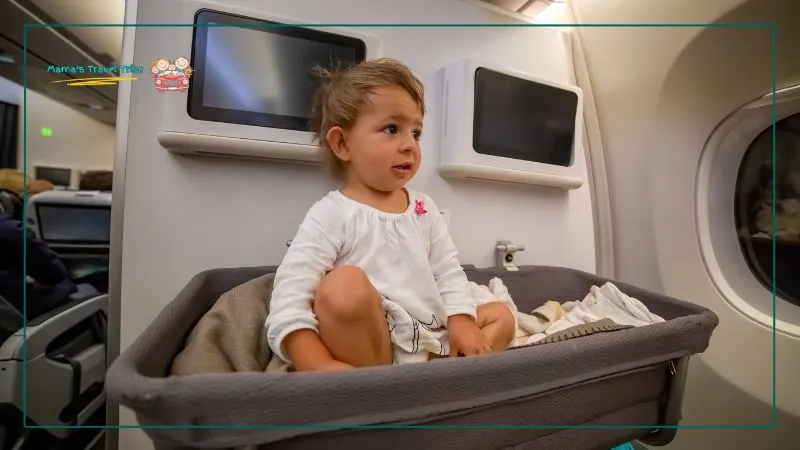
Maintain Your Baby’s Routine: Try to stick to your baby’s usual routine as much as possible. Keep their sleep and feeding times consistent with what they’re used to. This can help them feel more secure and comfortable.
Feed During Takeoff and Landing: Feeding your baby during takeoff and landing. Why? Well, this can help relieve ear pressure. Whether it’s breastfeeding, bottle-feeding, or giving them a pacifier, the sucking motion helps equalize the pressure in their ears.
Dress Comfortably: Dress your baby in comfortable clothes, and consider layering. Airplane cabins can be unpredictable in temperature, so having layers allows you to adjust as needed. Make sure the clothes are easy to change in case of any messes.
Consider a Nursing Cover: If you’re breastfeeding, a nursing cover can provide privacy if you prefer. It can make both you and your baby more comfortable, especially in a cramped airplane seat.
Keep Your Baby Entertained: Bring along a few of your baby’s favorite toys and books to keep them entertained. Soft toys that don’t make noise are ideal, as they won’t disturb other passengers.
Be Prepared for Spills and Messes: Have plenty of wipes and plastic bags on hand for any spills or messes. Being prepared can help you manage any accidents quickly and with minimal stress.
Health and Safety Tips for Flying with a 6-Month-Old
The health and safety tips for flying with a 6 month old include ensuring your baby is well-hydrated with frequent feedings. Use a baby carrier for easy airport navigation. Bring a well-stocked diaper bag with essentials (toys, pacifiers handy, etc.).
Bring a First-Aid Kit
Pack a small first-aid kit with baby-friendly remedies approved by your pediatrician. Include items like a baby-safe pain reliever, teething gel, nasal aspirator, band-aids, and any prescribed medications your baby might need. It’s better to have these items on hand, just in case.
Sanitize Surfaces
Airplanes can be full of germs, so it’s a good idea to sanitize the surfaces around your seat. Use sanitizing wipes to clean the tray table, armrests, seat belt buckle, and any other surfaces your baby might touch. This can help reduce the risk of your baby picking up any unwanted germs.
Keep Your Baby Hydrated
Staying hydrated is important, especially on longer flights where the air can be very dry. If your baby is old enough, offer small sips of water in addition to their regular feedings. For younger babies, make sure to breastfeed or bottle-feed regularly to keep them hydrated.
Monitor Temperature
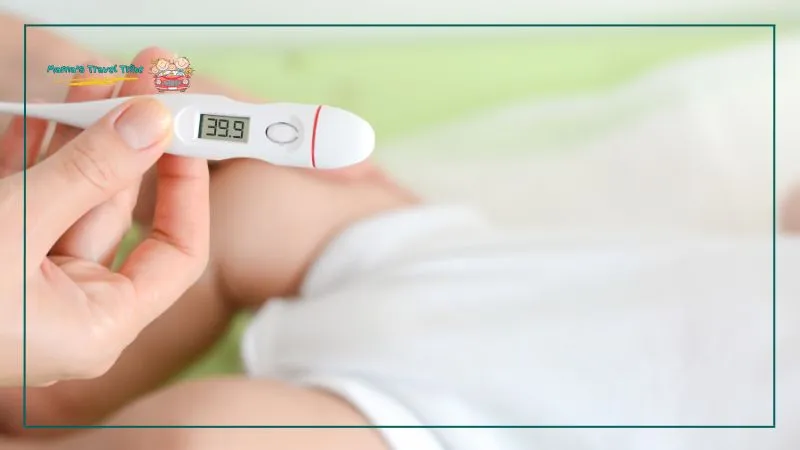
Airplane cabins can be unpredictable in temperature. Dress your baby in layers. However, note that you should choose those that you can easily add or remove. Make sure to bring a blanket to keep them warm if it gets chilly.
Hand Hygiene
Keep hand sanitizer within reach and use it frequently, especially after touching common surfaces. Make sure to clean your hands before handling your baby or their belongings.
Watch for Signs of Discomfort
Keep an eye on your baby for any signs of discomfort, such as fussiness, ear pain, or unusual behavior. If your baby seems uncomfortable, try feeding, walking around, or offering a pacifier to help soothe them.
Check Air Quality
If your baby has any respiratory issues, consider bringing a portable air purifier. This can help improve the air quality around your seat and make breathing easier for your baby.
Know Emergency Procedures
Familiarize yourself with the airline’s emergency procedures. Knowing what to do in case of an emergency can help you stay calm and focused, ensuring the safety of both you and your baby.
Conclusion
Traveling with a 6-month-old can be challenging, but with the right preparation, it can be a pleasant experience. Here’s a quick recap of the most important tips:
- Pack wisely with all the essentials like diapers, wipes, and a change of clothes.
- Use a baby carrier to keep your hands free while navigating the airport.
- Stick to your baby’s routine to keep them comfortable during the flight.
- Sanitize surfaces to keep germs at bay and ensure your baby’s health.
- Feed your baby regularly.
Now, you can enjoy a smoother flight with your little one. Safe travels!

